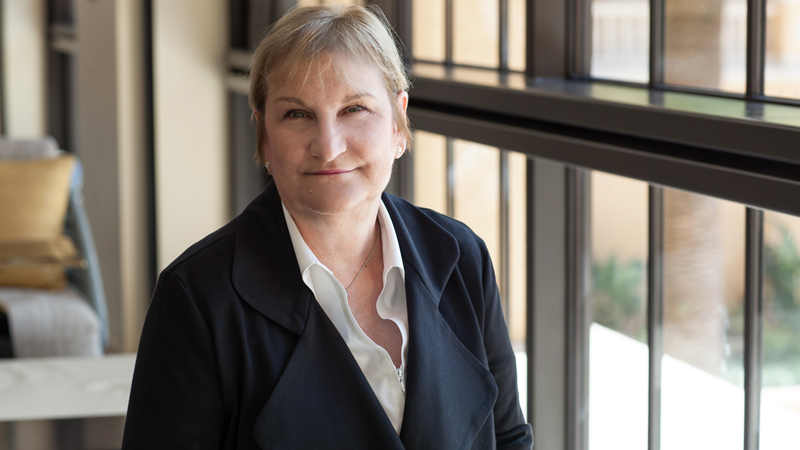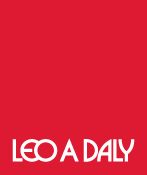Recent Articles
New Orleans Airport Named Best Airport in North America Three Years in a Row
The Louis Armstrong New Orleans International Airport (MSY) receives top award for Best Airport in North America for third consecutive year.
Adaptive Reuse Saves Embodied Carbon at Repositioned 20 Mass
Our integrated design team excels in complex adaptive reuse projects. The process of redesigning a building to support a new function utilizes our structural engineers, our systems experts, our architects and more. Our teams’ deep knowledge allows them to tackle even the most complex projects. These adaptive reuse projects create far less embodied carbon compared to demolishing and constructing a new building.
International Hotel & Property Awards Shortlist 20 Mass Royal Sonesta
LEO A DALY-Designed Royal Sonesta Capitol Hill at 20 Mass is shortlisted for the 2024 International Hotel & Property Awards.
Forbes Travel Guide Picks Two LEO A DALY Projects for 2024 Lists
Two hotels with major LEO A DALY design work have been ranked highly by Forbes Travel Guide.
Housing for Veterans Created in Tunnel to Towers Partnership
Tunnel to Towers partners with LEO A DALY to create housing for Veterans experiencing homelessness through projects in Florida and Georgia.
Pat Miller shares her hospitality story with InspireDesign
InspireDesign magazine invited senior hospitality advisor Pat Miller to share about her amazing career in hospitality design

The following is excerpted from Pat Miller’s “Storytellers” column, which appeared in the fall 2019 issue of InspireDesign:
I could tell you my story, but I’d much rather tell you ours. For the last twenty years I’ve led the hospitality group within LEO A DALY, a large architecture firm with a design legacy going back more than 100 years. What started as a small interiors group with the firm’s Dallas studio has become, through a singular focus on our clients’ success, one of the most respected hospitality groups in the industry. How we built it, and the lessons learned along the way, are really the story of my life.
I started as an interior designer in 1978, a time when many viewed the profession as a lesser counterpart to architecture. I wanted to smash that stigma and pursued specialization in interior architecture. This lens helped me develop a unique appreciation for scale and proportion and move past artifice to think holistically about spaces.
My entry into the world of luxury hospitality design came when I was 28 and I was given the incredible responsibility of leading interior design for the ground-up Hotel Crescent Court in Dallas. Through hundreds of mistakes and the patience of a trusting mentor, this experience taught me the true meaning of luxury and the level of detail needed to create exceptional guest experiences.
Hospitality is a romance of the five senses. It’s the sound of heels on marble floors; it’s the intimate light of a restaurant; it’s the transporting taste of perfectly prepared ingredients; it’s the wood or fabric texture as you touch the armrest of a perfect chair; it’s the smell of fresh cut flowers, or the smell of nothing in a busy restaurant (a real feat). Great design envelopes the guest and makes them feel special. Every dimension of the experience is custom—the colors are tinted just so, the wood finishes are extraordinary, the stones are uncommon. You’re serving a guest who has been all over the world and seen the absolute best, and then offering them something new and delightful.
I joined LEO A DALY in 1998, attracted by the possibilities of creating a boutique hospitality group within the context of a large firm. With access to architects, engineers and planners, in addition to interior designers, there wasn’t anything we couldn’t do.
To do this at scale, I was adamant that we avoid having a signature style. Rather than leading a small nucleus of people who did one thing, I wanted to do the opposite: put the client at the center and craft design teams as bespoke as the environments we create. With this approach, we could respond to any kind of project anywhere in the world with the same impeccable focus on design quality.
To make this work, we needed to build a diverse team. I looked for people who were different from me, and different from each other, but united by a willingness to challenge each other and lead clients out of their comfort zones to ideas they’d never had before.
I love the range of creative people that are needed for any hospitality project. Some designers are very energetic, roll-up-their-sleeves types who can draw like a banshee in front of the client and never seem to run out of ideas. Others can put together an FF&E package like you’ve never seen before, detailed down to the last doorknob and hinge. We have interior architects—minimalists who share my obsession with form and proportion. Then—so importantly—you need people who can manage unbelievably complex projects and herd mass quantities of subconsultants.
What is enduring about this group is we’ve created a place where designers’ individual personalities can shine through. It’s a place where talented people can gain the recognition they deserve without having to strike out on their own or be overshadowed by the persona of a single star designer. It’s an egoless approach that has been very motivating for designers and remains a reason why they stick around.
As I inch toward retirement, I think about the twenty years I’ve spent building this practice, and I am excited about the future. I recently transitioned into a senior hospitality advisor role with LEO A DALY, a process that included hand-picking our new global hospitality practice leader, Mark Pratt. It’s rare to find someone who shares my dedication to client service and passion for design in equal measure, but Mark is one of those people. He’s also ambitious about growing this practice, expanding geographically and leveraging our luxury and architectural capabilities. Whew!
My new role is perfect for where I am at this point in my career. Over the years of helping clients, I’ve become kind of a Dear Abby—always a phone call away, helping clients make decisions, connect to funding sources, management sources and development sources, and making sure their vision is implemented perfectly. This is a final step toward what I’ve always tried to do in my career: push others to the forefront and watch with joy as they find their niche and express their creative voices.
Read the issue:
